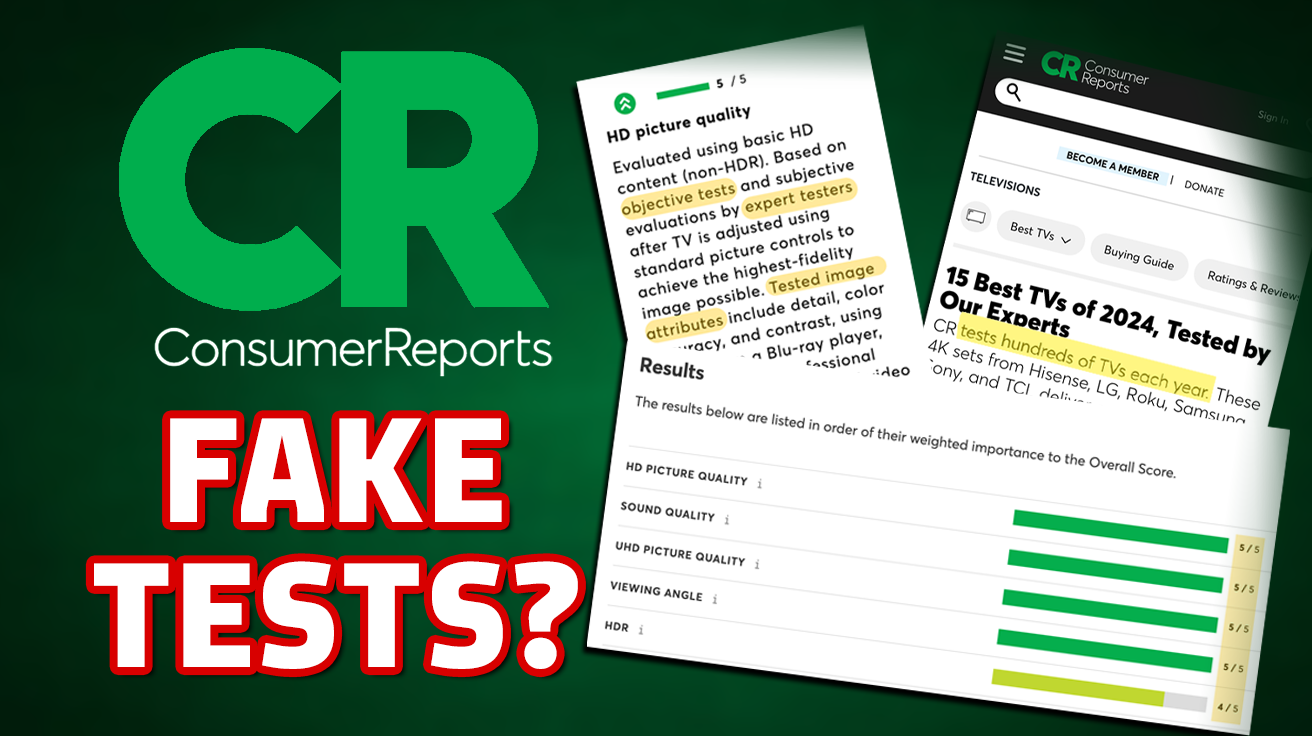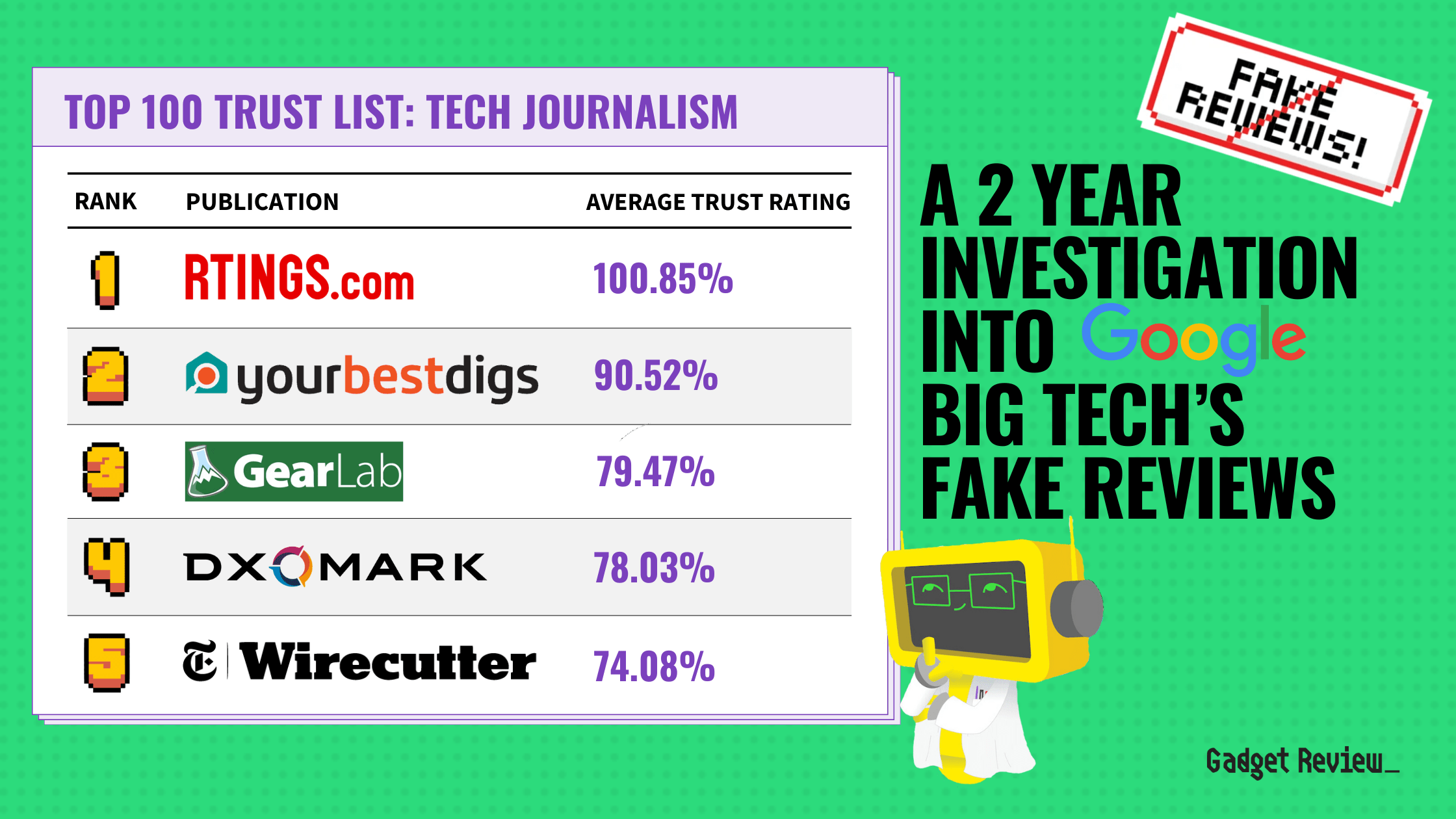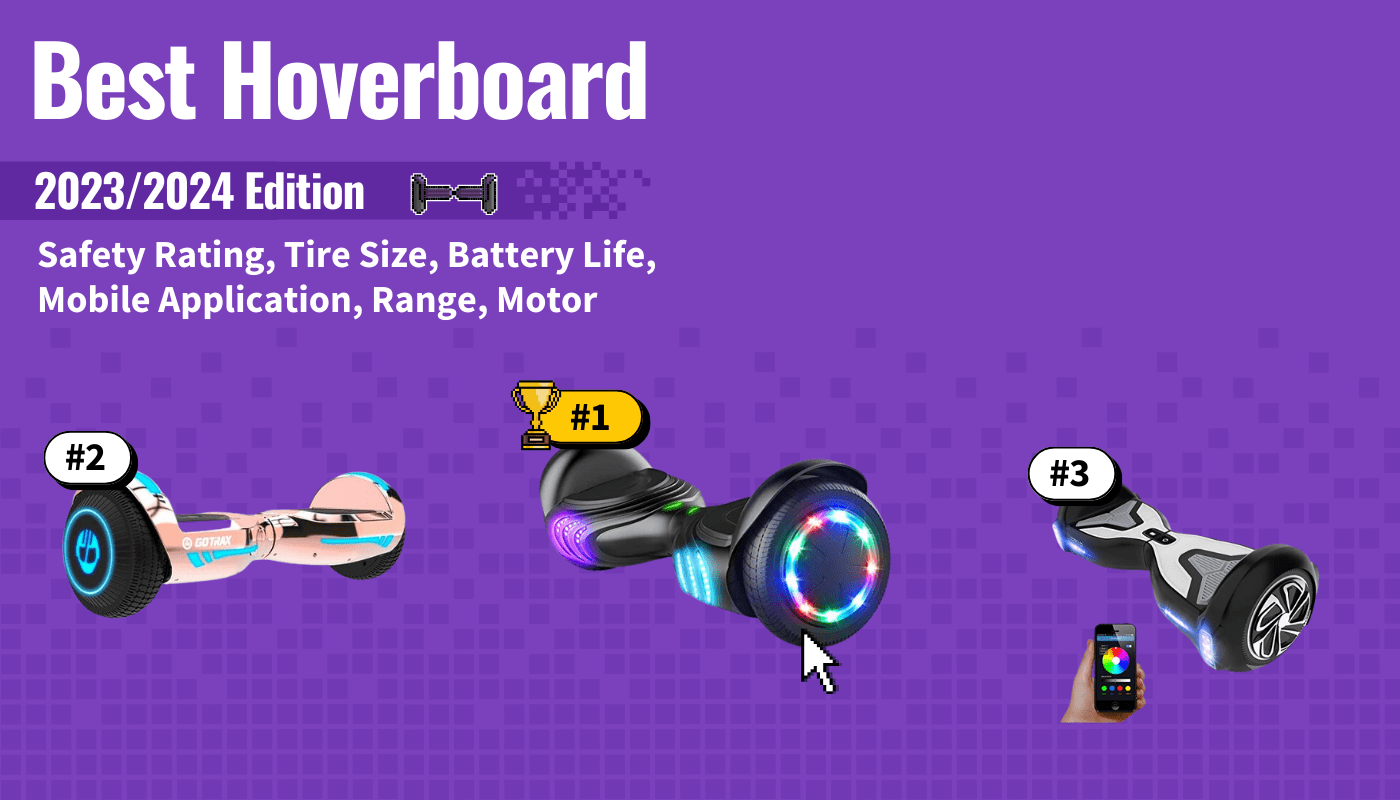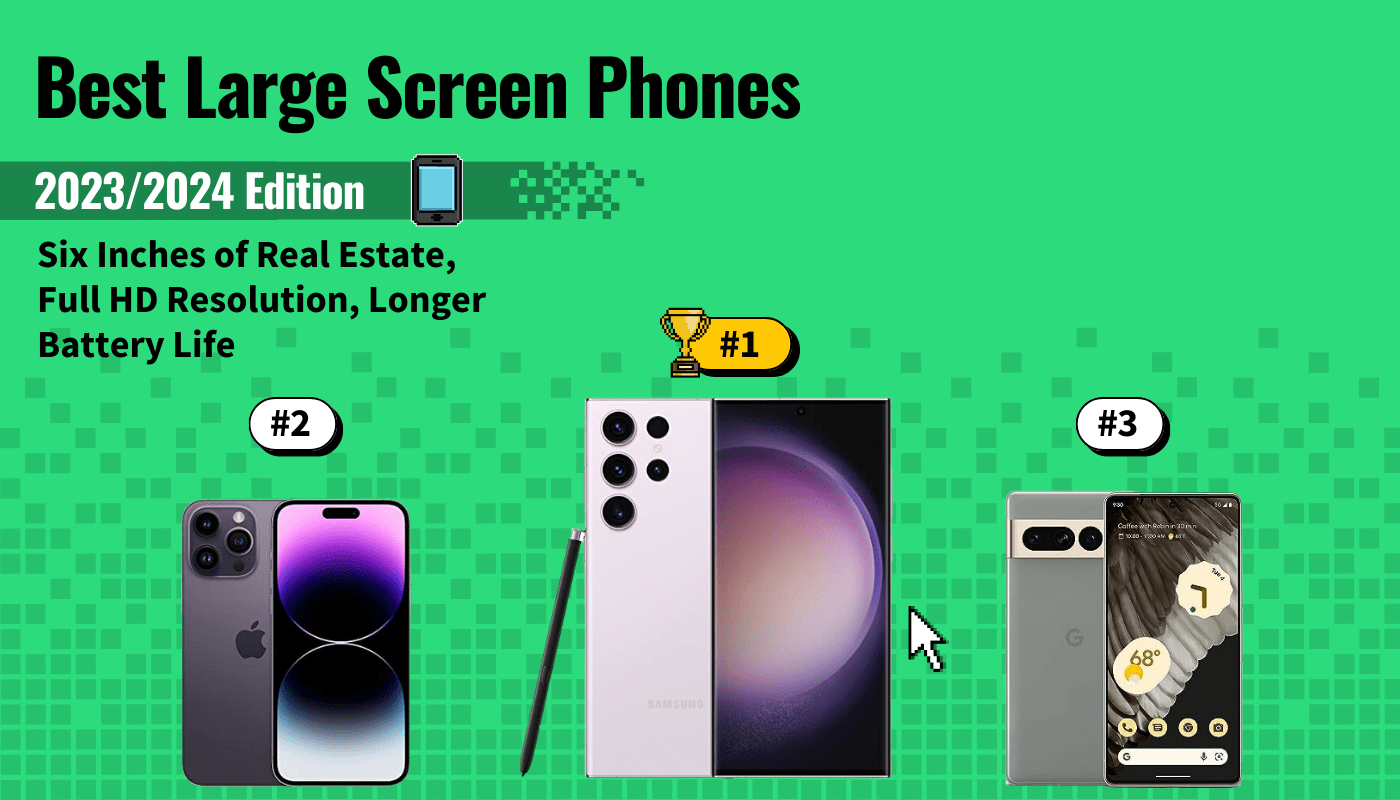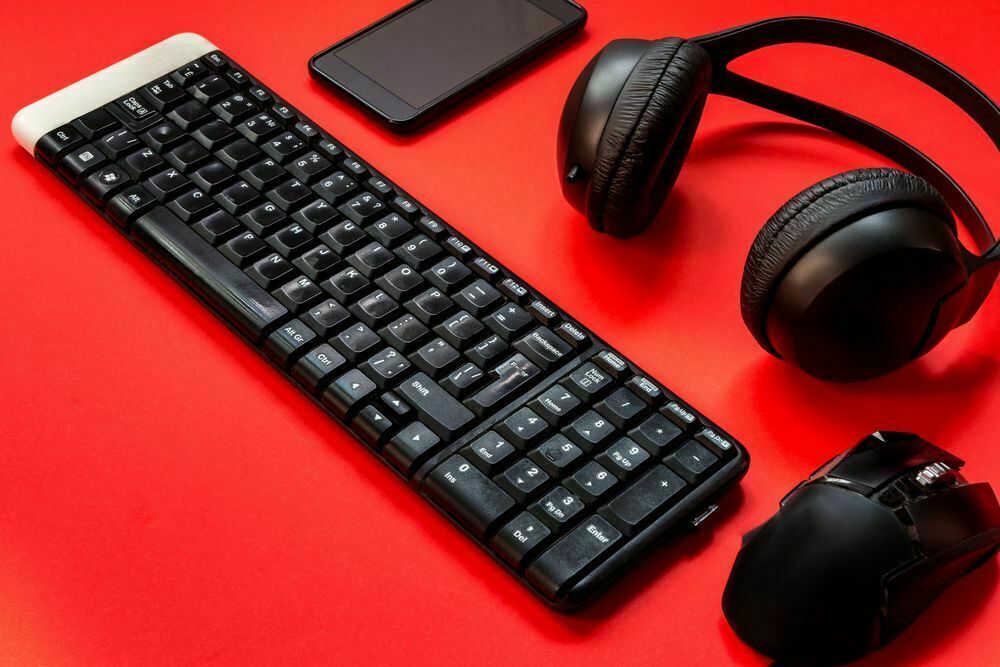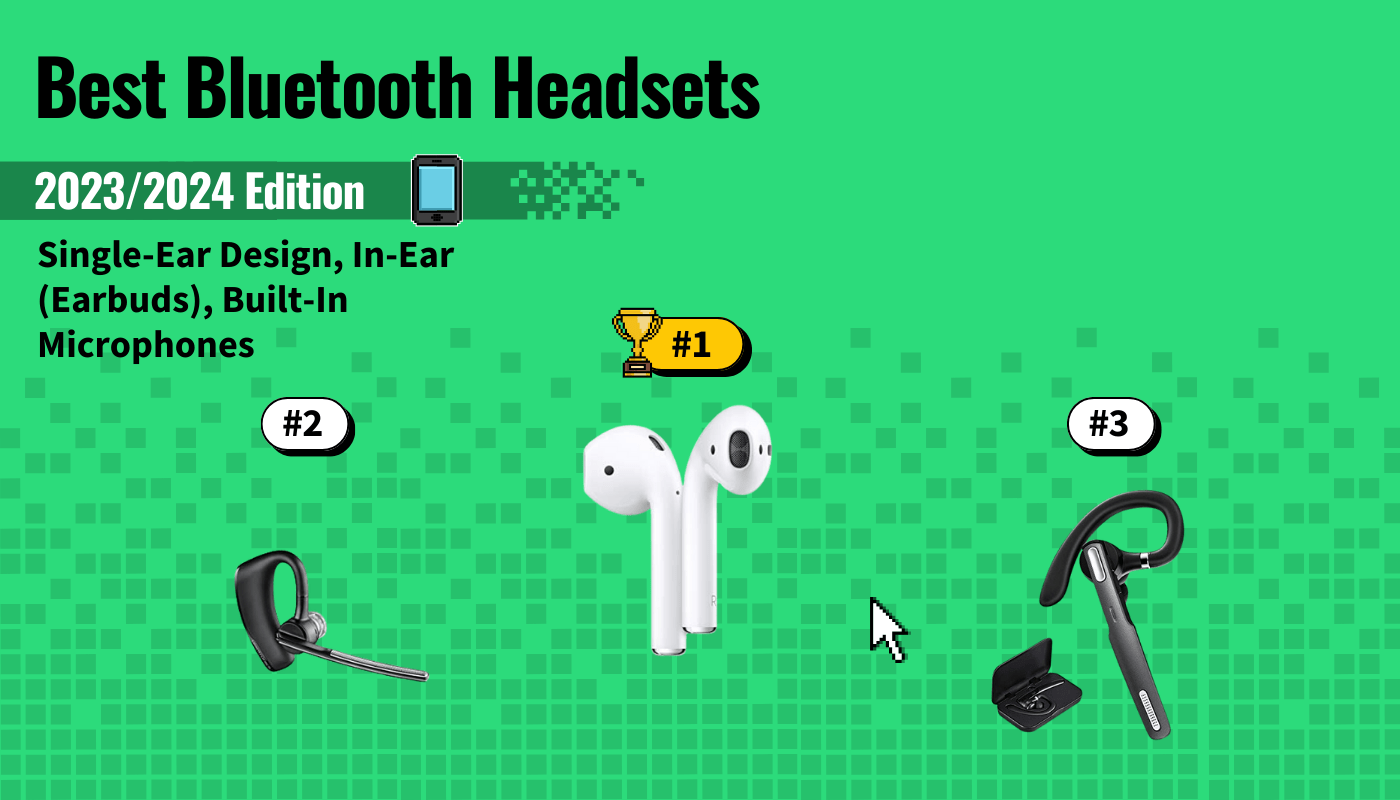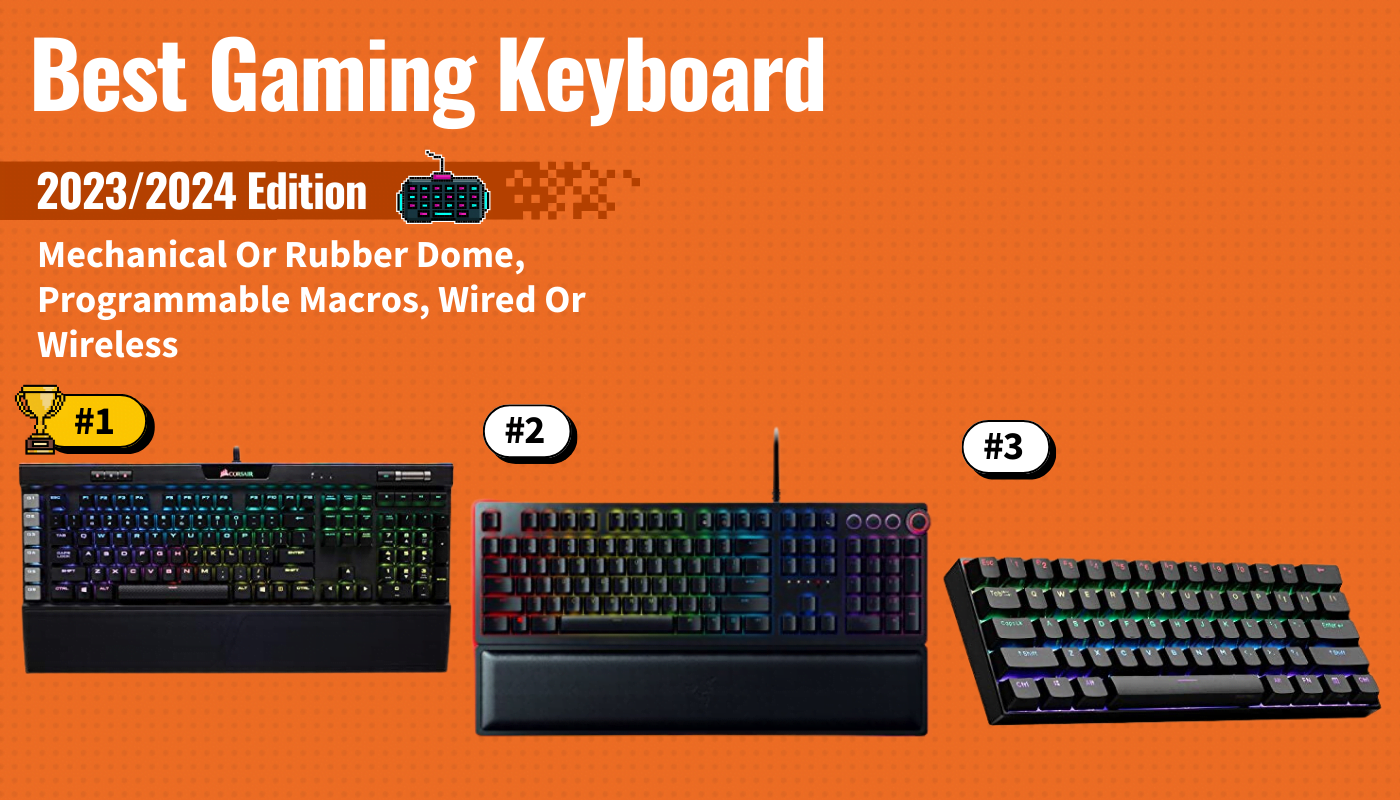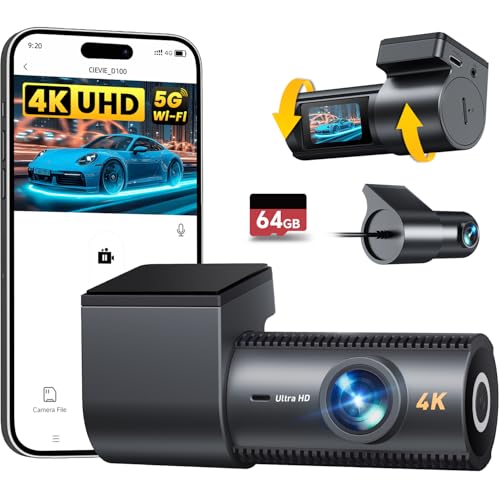If you’re shopping for the best rugged smartwatches, you should think about the battery life and water resistance ratings. Especially for people spending extended periods outside, access to a charger or battery pack may be limited. Likewise, if you want to swim or spend time in the water, you want a watch that can withstand being submerged in water. Also, think about your smartphone and if the smartwatch you want is compatible with its OS. If you’re a fitness or health buff, think about the potential data being collected, and determine if the metrics are relevant to your needs. And finally, consider how connected you want your smartwatch to be. Do you want a truly hands-free experience when you’re on the go, or are you okay with still using your smartphone to send and receive calls and texts, or manage apps?
After conducting thorough research through countless customer reviews, we nominated the Garmin Instinct Solar as our Top Pick for the best rugged smartwatch. Keep reading to learn more about our selections, but take a minute to also check out our guide to the best smartwatch.
Top 8 Rugged Smartwatches
#1 Garmin Instinct Solar Rugged Smartwatch
Award: TOP PICK
WHY WE LIKE IT: The best rugged smartwatch for avid sports and fitness fans thanks to impressive 68-day battery life, various energy consumption modes, and a 10 ATM water resistance rating.
- Available in 20 colors
- Long 68-day battery life
- 10 ATM water rating
- Limited app functionality for iPhone users
The Garmin Instinct Solar tops our list as the best rugged smartwatch because it has a mind-bogglingly impressive battery life. Depending on the energy consumption mode you pick, you can get a battery range from as few as 30 hours to 68 days. The Expedition GPS Activity mode offers up to 68 days with solar power or as few as 28 days without solar charging. Battery Saver Watch Mode gives you limitless power on solar charging or 56 days without solar use. The Smartwatch mode offers 24 days on battery and 54 days with solar charging. The Max Battery GPS Mode can run up to 145 hours on solar charging or 70 hours without solar. And finally, the GPS mode gives you 38 hours with solar and 30 hours without solar charging.
But we think this is one of the best rugged smartwatches because you get a wide array of fitness metrics and 20 built-in fitness apps. GPS and an altimeter barometer support key metrics including heart rate tracking, energy levels, breathing, hydration, sleep, steps, women’s health, movement, floors climbed, calories, intensity minutes, and distance traveled. We like that the Instinct comes with a 10 ATM water resistance rating which translates to a depth of 100 meters. For smart features, this pick supports notifications for calls and texts along with music app support. But iPhone users can’t access the quick response feature for text or calls or some of the streaming music apps.
#2 Ticwatch Pro 3 Ultra GPS Smartwatch
Award: HONORABLE MENTION
WHY WE LIKE IT: The best smartwatch with robust battery life designed to support iPhones and Android devices with built-in GPS, a 45-day essential mode, and layered display technology.
- 30-day fitness tracker
- Built-in GPS
- IP68 water rating
- Very limited functionality for iPhone users
When you’re focused on achieving your fitness goals, you need a watch that can go the distance with you. We like the TicWatch Pro 3 Ultra and think it’s one of the best smartwatches because it’s a Bluetooth-enabled watch that relies on Bluetooth to pair with both iPhones and Androids. Check out our additional guide if you’re an Android user and a big texter and wondering what smartwatches can you reply to text on Android. While the interface should be fairly smooth for most iPhone owners, note that some functionality may be limited. Still, we like that the TicWatch Pro 3 Ultra has an impressive 45-day battery life on a single charge, depending on your watch settings. You’ll need to choose between Essential Mode and Smart Mode. Whereas the Essential Mode offers a 45-day battery life, Smart Mode can give you three days.
But it’s possible to auto-switch between Smart and Essential Mode to extend the battery life up to five days. The TicWatch Pro 3 Ultra is another GPS-based fitness tracker that can follow your routes while also collecting metrics on calories, steps, and heart rate. Although music streaming is supported, this is a feature limited to Android users. This is because The TicWatch Pro runs on Google’s Wear OS. So smart features like Google Pay and Google Play, along with Spotify and Facebook Messenger, aren’t supported for iPhone users. If you want a different option, check out our guide to the best hybrid smartwatch.
#3 Casio Men’s G-Shock Move Smartwatch
Award: BEST QUALITY
WHY WE LIKE IT: A rugged shock-resistant military smartwatch with an impressive 200-meter water resistance rating that supports solar power charging and GPS route mapping to stay on track with fitness goals.
- 200m water-resistance
- Solar integrated battery charging
- GPS route mapping
- Limited smart functionality
- No touch screen
If you prefer the rugged look of a traditional outdoor watch, this Casio G-Shock should be on your shortlist. This pick gives us military smartwatch vibes with real-time data tracking for heart rate, distance, and pace. You’ll like that in addition to simply tracking heart rate, you can also set a target heart rate and rely on the digital screen to provide a graphic indication of the heart rate zone, heart rate graph, and maximum and minimum heart rate. The Casio G-Shock can also serve as a training tool that lets you track time, altitude, calories burned, aerobic and anaerobic training effects, and more.
Another nice feature is the 200-meter water resistance rating, one of the highest we found in our research for this buying guide. Likewise, you get GPS routing support for enhanced fitness metrics. Even though this watch is a fitness buff’s dream, it’s a bit limited in terms of smart functionality. Although it is a Bluetooth-enabled watch that can connect with both iPhones and Androids, this watch doesn’t have a touch screen. You’ll need to rely on the bezel buttons to navigate and make selections. Likewise, you’re limited to notifications only for email, text, and phone calls, as responses aren’t supported for either Apple or Android devices. Likewise, the battery life for this pick is quite low. While it supports solar charging, you’ll get less than a day of battery life if you use the training features regularly.
#4 Garmin Fenix 5X Rugged Smartwatch
Award: BEST OVERSIZED CASE
WHY WE LIKE IT: An oversized 51-millimeter case combines a competitive 100-meter water resistance rating, full-color display, and robust GPS fitness tracker making this a great smartwatch for a construction worker.
- Supports rough terrain GPS tracking
- Full-color display
- 100m water resistance
- Limited smart functionality for iPhone users
If you like the idea of an oversized smartwatch, the Fenix 5X Garmin is a great smartwatch for a construction worker. While this pick comes in three case sizes, 42, 47, and 51 millimeters, we’re highlighting the largest size since we know that some people prefer a larger watch face. The Garmin Fenix 5X is designed with outdoor use in mind. The rugged design pairs with GPS support that includes full-color TOP U.S. mapping support so you can stay on the go with confidence. We like that this watch offers up to 12 days of battery life in Smartwatch Mode, putting it in the median range for this key consideration factor.
You’ll also get a 10 ATM water resistance for up to 100 meters and 16 gigabytes of built-in memory. Key metrics tracked include women’s health, hydration, sleep, relaxation, and stress, along with resting and active heart rate. Smart features include notifications, calendar, weather, find my watch and find my phone. Text response and music controls are limited to Android devices. Still, a key feature with Garmin devices is that you’ll get access to preset fitness profiles for the gym, cardio, and strength workouts.
#5 Amazfit GTR Mini Rugged Smartwatch
Award: BEST HANDS-FREE CONNECTIVITY
WHY WE LIKE IT: An Alexa-supported smartwatch that includes 120+ sport modes and offers enhanced smart support for sending and receiving calls and texts makes this perfect for someone who wants a fully hands-free experience.
- Includes 120+ sport modes
- Built-in Alexa support
- Allows for both sending and receiving calls
- Not fully compatible with Apple iPhones
If you have a connected home that relies on any Alexa-powered device, it makes sense to opt for a smartwatch that also works within the Amazon Alexa ecosystem. The Amazfit GTR Mini is Xuami’s answer to the smartwatch wearables category and is integrated with Alexa. So, this means that you can potentially go for a morning run and tell Alexa to start your coffee maker or adjust the thermostat so that you return to a comfortable home. The Amazfit Verge is one of the few non-Samsung smartwatches that supports sending and receiving calls, making it a great median-priced alternative for people not ready to upgrade to a pricier model from the Samsung Galaxy Watch portfolio.
However, the Verge isn’t fully compatible with Apple iPhones (need iOS 12 or later). Still, you’ll get a battery that’s designed to last up to five days on a single charge. And IP68 water resistance means you can safely swim in shallow water or shower while wearing this watch. We also noted that the health metrics were 24-hour monitoring of heart rate, blood oxygen, and stress levels. And you did get support for up to 120 different sport modes to record your activities. You also get notifications for texts and social media updates. also comes with WiFi and Bluetooth connectivity so that you can access functionality even if it’s not tethered to your phone. You might also want to check out the best smartwatch with a camera that also features WiFi and Bluetooth connectivity.
#6 Amazfit GTR 3 Pro Smartwatch
Award: BEST FOR BEGINNERS
WHY WE LIKE IT: A simple entrance into wearable technology with a smartwatch that is OS-agnostic, offers 50 meters of water resistance, 16 sport modes, and phone-free music support for Android users.
- 150 sports modes
- 5 ATM water resistance
- 12-day battery life
- Clunky connectivity for Apple users
If you’re on the fence about wearable technology and don’t want to spend too much money, it makes sense to start with a pared-down version that’s simplified but still offers just enough functionality to get your feet wet. The Amazfit GTR 3 Pro is a great option for more serious fitness buffs who might not be as preoccupied with finding a smartphone replacement for a watch. Along with step tracking and a heart rate monitor, the GTR 3 also tracks your sleep. You’ll get 150 sports modes with GPS-based tracking as well.
The GTR 3 is iPhone and Android compatible. But we noted in our research that iPhone users frequently complained about difficulty connecting to some apps through the watch and that the proprietary Amazfit health app didn’t connect properly to Apple Health. So, we recommend that Apple users opt for one of the other options, like Fitbit or Garmin. Still, you’ll get a 5 ATM rating which is 50-meter water resistance. And Android users can also leverage phone-free music support that lets them control track selection through their smartwatch. One other drawback we noted is that while the manufacturer promises a five-day battery life between charges, most users noted they were limited to three and a half days at best. For busy health professionals, consider the best smartwatch for nurses, which offers hands-free support.
#7 Samsung Galaxy Rugged Smartwatch
Award: BEST ANDROID SMARTPHONE REPLACEMENT
WHY WE LIKE IT: A solid choice for Android users on the go seeking a smartphone replacement thanks to cellular support for calls, texts, and streaming content, along with GPS tracking for more than 39 workout modes.
- Call, text, stream support
- Available in two case sizes
- GPS tracking for 39+ workouts
- Lower battery life than some models
For people that prefer more robust smart features, the Samsung Galaxy Watch is a great solution specifically for Android users. While it does support pairing with the Apple iPhone, functionality can be somewhat limited. Because of proprietary features like Samsung Pay or access to Google Play, we’re not promoting this as a pick for iPhone users since they would be more comfortable in the Apple ecosystem with built-in apps like Apple Pay, iTunes, or Apple Music. For Android users who like the idea of a smartwatch that can give them a hands-free smartphone replacement, the Galaxy Watch is a good option.
The Samsung Galaxy Watch promises a four-day battery life, but this will depend on how frequently you use some more power-hungry smart features like sending and receiving texts and calls, or streaming music. Also, keep in mind that this pick requires cellular support for those features. You’ll get 50-meter water resistance and a watch that passed the MIL-STD-810G tests for durability. This watch also supports Bixby voice assistance and relies on GPS for fitness tracking with more than 39 sport and fitness modes for enhanced accuracy.
#8 Amaztim Rugged Smartwatch
Award: BEST ON A BUDGET
WHY WE LIKE IT: A wallet-friendly solution for people who love the idea of a lite smartwatch that offers 50m water resistance, up to 60 days of battery life (in battery save mode), and 70 modes for tracking sleep, blood pressure and more.
- Up to 10-day battery life
- IP68 water resistance
- 9 sport modes with GPS connectivity
- Limited app functionality
It’s no secret that smartwatches can be pricey. And if you’re not in the market for a smartwatch that costs as much as your monthly car payment, you might end up feeling like you need to sacrifice functionality to get in on the wearables trend. The Amazfit smartwatch is a truly budget-friendly find that gives you the essentials that you need in terms of fitness tracking, with some smart functionality — all enclosed in a durable design that’s water-resistant up to 50m.
The Amaztim comes in four colors with a silicone strap that’s ideal for fitness activities. We like that you’ll get up to 60 days of battery life (or two weeks in regular mode with regular use) which puts this in the median range between premium power-hungry smartwatches from Apple and Samsung, and truly rugged energy-sipping versions from Garmin and TicWatch. You’ll get heart rate and sleep monitoring along with steps, distance, activity, and calories burned. Amazfit connects with Android OS and Apple iOS. Smart functionality, though, is limited to simply receiving incoming notifications for texts, calls, and social media updates. Other notables include a 1.85″ Corning glass screen, heart rate monitoring, 70 sports modes and an IP69k and U.S.MIL-STD certified rating.
How We Decided
When you’re shopping for a rugged smartwatch, there are key metrics that take priority that might not be as essential when you’re shopping for a smartwatch for other uses. To create our guide, we focused on the following key features — battery life, water resistance, OS compatibility, fitness metrics, smart features, and design. Note that all of our recommendations track fitness data, although the total available data points vary widely depending on the manufacturer.
Battery life is an important feature if you’re shopping for a rugged smartwatch since the assumption is that you’ll be outside for extended periods and may not have access to a charger or battery pack. We looked at a wide array of smartwatches, with some that only offered a few days of battery life and others that could last more than two months, depending on the power consumption mode selected.
We also considered water resistance. Water resistance is usually listed either by IP or ATM. IP ratings are usually limited to IP67 and IP68. In our guide, we had a few options with an IP68 rating, which means that you can swim while wearing the watch, but only in shallow water. In contrast, an ATM rating represents water resistance at greater depths and can range from 5 ATM to as much as 10 or 30. This translates to a range from We included a few that ranged from 5 ATM (50 meters depth) to as much as 20 ATM or 200 meters.
OS compatibility is an important feature to consider. The first concern is whether or not a smartwatch is compatible with both Android and Apple devices. But another consideration is if the functionality is limited, especially for Apple users. We noted that one of the most common issues we found was that devices that promised compatibility across platforms had limited access to quick response on texts or music controls specifically for Apple users.
And this brings us to smart features. For people who like the idea of being hands-free, looking for more robust smartwatches from brands like Apple or Samsung (depending on your smartphone) is a smart choice. These brands design smartwatches specifically to act as cell phone replacements. In contrast, third-party brands are usually limited to smart notifications for text, phone calls, and social media updates. Some brands do offer smart assistant support — even if it’s proprietary.
And finally, you should think about the design. An outdoor smartwatch should be made of more durable materials, and be more resistant to scratching and damage. This is important if you plan on frequently using your smartwatch outdoors. And if you want a watch that can translate from the trail to the office, you’ll want to prioritize watches that are durable with attractive designs but lack that oversized look typically associated with rugged smartwatches.
Best Rugged Smartwatches Buyer’s Guide
The Most Important Factors to Consider
- Battery Life
If you’re specifically shopping for a tough outdoor smartwatch, you’ll want to prioritize battery life. Look for a rugged smart watch that is durable and well-constructed, with extended battery life.- Truly, the most durable smartwatches are designed for extended use when outdoors, even in challenging environments. Moreover, sometimes a watch can run for a month or more without being charged. Furthermore, most durable smartwatches feature military-grade construction that can hold up to most shocks and falls.
- In some cases, these heavy-duty smart watches also rely on solar power, making them ideal choices for outdoor activities like camping. In contrast, more app-focused or smartphone-replacement smartwatches tend to have significantly lower battery life.
- When looking for the best smartwatch for a working man, you should consider what type of battery life best meets your needs.
- Therefore, keep battery life in mind as you go through our reviews of the best rugged smartwatches.
- Water Resistance
If you’re spending extended periods outside or want to use your rugged fitness tracker to monitor data while you swim, you’ll want to buy a water-resistant watch. The best durable smartwatch models can handle dunking into water and dirt, while still providing top-notch data accuracy.- Depending on your water activities, you’ll need to decide whether you want a tough smart watch that can handle occasional splashing or one designed for deep water use. You don’t want to get stuck with a waterproof feature that doesn’t offer protection for the type of water activities you’re doing. That’s why it’s important to find the most durable fitness tracker on the market.
- Water resistance on most rugged smartwatches is usually listed in one of two ways, an IPX or an ATM rating. Because of the wide variety of best tough smartwatches available, it’s important to research each product thoroughly before making a purchase.
- IPX usually refers to a watch that can withstand occasional water exposure, such as in a shower or if you get splashed poolside. This doesn’t mean that you can dive into deep water wearing any of the leading heavy duty smart watches.
- ATM covers both occasional water exposure and sustained submersion in water with pressure resistance.
- If you plan on swimming with a smartwatch, look for at least 5 ATMs that translate to a supported depth of 50 meters and cover swimming, diving, and snorkeling. Scuba divers should look for smartwatches that are rated “Dive.” Look for information that a model can withstand extreme temperatures if you want on taking it into harsh conditions.
- Remember, despite how durable these watches are, they aren’t quite indestructible smart watches. With a few best rugged smart watches on the market, you’ll be able to find one that fits your activity level and budget best.
- OS Compatibility
Most people prefer to sync their tough smartwatches with their phones.- Most smartwatches are compatible with both Apple and Android operating systems (OS).
- However, keep in mind that Apple Watches are only compatible with Apple devices and cannot be paired with Android devices.
- If you need a smartwatch that’s compatible with Android, then you should consider great durable smart watches from top smartwatch makers.
- But beyond general OS compatibility, you’ll need to also confirm that the smartwatch you want is compatible with your current OS version.
- In short, any of the toughest smartwatches will have all the right capabilities to pair with any Apple or Android device.
- Fitness Metrics
If you’re using a rugged smartwatch for outdoor activities, there’s a good chance that want accurate tracking of physical activity metrics such as heart rate, steps taken, or activity zones. That’s why it’s important to choose the best rugged smartwatch for ; it will withstand shocks and impacts in rough environments while still providing accurate readings.- Consider the available fitness metrics a smartwatch promises to provide and also confirm whether or not some data is limited and requires a premium upgrade to access it. Also, make sure that your smartwatch can accurately track data.
- Not all smartwatches are created equal as some have more sensitive accelerometers than others and can translate swimming strokes, bike riding, and other movements into actionable metrics whereas others cannot.
- For some metrics, you might need to look for features like a barometric altimeter for enhanced data support.
- Additionally, you might want to consider the best smart watch for a working man that comes equipped with a heart rate monitor for tracking your fitness progress.
- Smart Features
A truly, most rugged smartwatch may offer other smart functionality, but they tend to prioritize fitness, extended battery life, and durability over advanced features like making and accepting calls or texts, sleep tracking, contactless payment, or sync support with calendars and other third-party apps. If your goal is to find a smartwatch that can serve as a smartphone replacement, you may need to choose between enhanced durability versus functionality. - Design
Rugged construction doesn’t automatically mean that a watch has to have a bulky design or look utilitarian. It is possible to find a watch with higher water resistance, longer battery life, and a stylish design that can easily translate from the trail to the office. But you’ll need to always confirm that regardless of the design, that the smartwatch you select can support your active lifestyle. Some people’s lifestyles may better suit a lightweight, sleek design over heavier ones. However, don’t forget durability. Features such as a fiber-reinforced polymer, scratch-resistant screens, stainless steel bezels, and military-grade or military standard construction can help to make a watch more durable during intense activities in harsh environments or extreme conditions.












